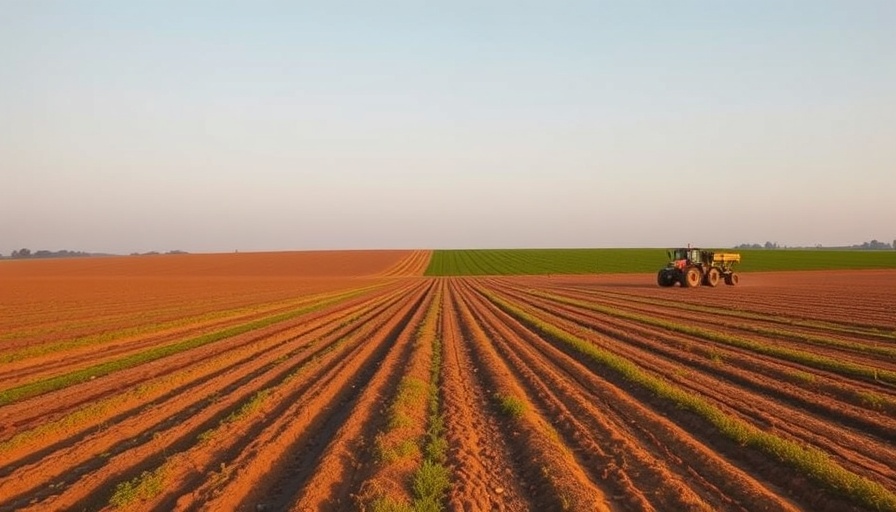
Uncovering the Water Crisis in California's Central Valley
California's Central Valley, known for its lush agriculture and production of nearly a quarter of the nation's food, faces a looming groundwater crisis. Depletion of this precious resource poses a threat not just to farms, but also to the communities that depend on it for their very survival. Understanding how to replenish these dwindling groundwater reserves is essential for both environmental sustainability and agricultural resilience.
Groundwater: The Lifeblood of Agriculture
Did you know that during regular years, about 43% of the freshwater used in the Central Valley comes from groundwater? This percentage skyrockets to 70% during droughts. This heavy dependence comes as a result of California's vast irrigation system, which supports 75% of the state's irrigated lands. As over-pumping has led to a significant decline in groundwater levels, experts are advocating for a renewed focus on managed aquifer recharge.
The Role of Cropland in Groundwater Recharge
A groundbreaking study from Stanford University reveals that agricultural lands, especially croplands like orchards and vineyards, can be pivotal in refilling groundwater aquifers. An extensive analysis involving helicopter-borne sensors surveyed over 12,000 miles of the region to assess the soil's conductivity; the results indicated that approximately 13 million acres may be suitable for groundwater recharge. Dr. Seogi Kang, co-author of the study, states, "70% of the Central Valley is cropland, so naturally, much of the suitable area overlaps with agriculture." Harnessing these fields for aquifer recharge is emerging as a critical solution.
Managed Aquifer Recharge: A Promising Approach
Managed aquifer recharge involves diverting surface water—like rainwater or snowmelt—into areas where it can percolate underground. This approach is particularly advantageous as it maximizes natural resources and encourages water sustainability. Agricultural practices adapted to facilitate recharge can also align with eco-conscious initiatives that boutique hospitality professionals may pursue, like engaging in sustainable water management techniques at their properties.
Connecting Sustainability Goals and Groundwater Management
For boutique hotel owners and eco-lodge operators, understanding groundwater management is not just a matter of environmental stewardship; it's also about enhancing their offerings. By integrating sustainability goals with groundwater recharge efforts, they can promote unique experiences that resonate with eco-conscious travelers. Imagine guests staying in a beautiful guesthouse amidst orchards, knowing their visit supports local groundwater replenishment initiatives.
Future Trends and Implications for Hospitality
As climate change aggravates water scarcity, initiatives like groundwater recharge will become increasingly vital. Boutique hospitality professionals have an incredible opportunity to lead by example, emphasizing practices such as off-grid solar use, urban farming, and other eco-initiatives that ultimately reduce fossil fuel use. There’s a growing appreciation among travelers for businesses that commit to sustainability, which could make eco-conscious operators more attractive in a competitive market.
Be a Part of the Solution
So, what can you do? Simple measures such as collaborating with local agricultural practices or supporting organizations focused on sustainable water management can turn your eco-lodging into a beacon of conservation. Integrate paper wrappers for snacks, reduce plastic waste, and educate your guests on the importance of water conservation in California.
In facing an uncertain future, the onus is on all of us to make informed choices. By investing in sustainable practices that replenish our natural resources, we can help ensure that California's Central Valley remains a thriving agricultural heartland for generations to come.
 Add Row
Add Row  Add
Add 




Write A Comment